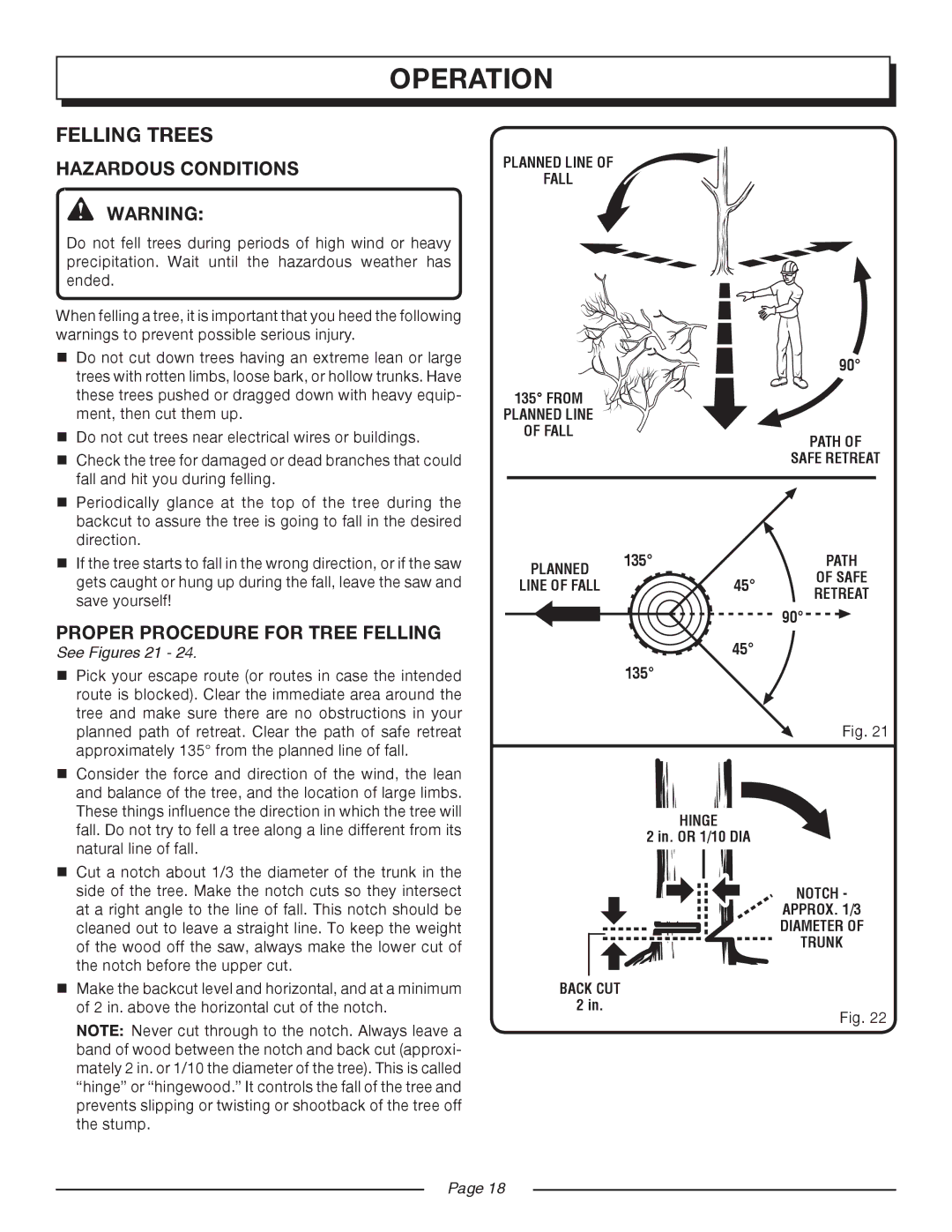
operation
FELLING TREES
HAZARDOUS CONDITIONS
WARNING:
Do not fell trees during periods of high wind or heavy precipitation. Wait until the hazardous weather has ended.
When felling a tree, it is important that you heed the following warnings to prevent possible serious injury.
■nDo not cut down trees having an extreme lean or large trees with rotten limbs, loose bark, or hollow trunks. Have these trees pushed or dragged down with heavy equip- ment, then cut them up.
planned line of
fall
90°
135° from
planned line
■nDo not cut trees near electrical wires or buildings.
of fall
PATH OF
■nCheck the tree for damaged or dead branches that could fall and hit you during felling.
■nPeriodically glance at the top of the tree during the backcut to assure the tree is going to fall in the desired direction.
nIf the tree starts to fall in the wrong direction, or if the saw gets caught or hung up during the fall, leave the saw and save yourself!
PROPER PROCEDURE FOR TREE FELLING
See Figures 21 - 24.
nPick your escape route (or routes in case the intended route is blocked). Clear the immediate area around the tree and make sure there are no obstructions in your planned path of retreat. Clear the path of safe retreat approximately 135° from the planned line of fall.
nConsider the force and direction of the wind, the lean and balance of the tree, and the location of large limbs. These things influence the direction in which the tree will fall. Do not try to fell a tree along a line different from its natural line of fall.
nCut a notch about 1/3 the diameter of the trunk in the side of the tree. Make the notch cuts so they intersect at a right angle to the line of fall. This notch should be cleaned out to leave a straight line. To keep the weight of the wood off the saw, always make the lower cut of the notch before the upper cut.
nMake the backcut level and horizontal, and at a minimum of 2 in. above the horizontal cut of the notch.
Note: Never cut through to the notch. Always leave a band of wood between the notch and back cut (approxi- mately 2 in. or 1/10 the diameter of the tree). This is called “hinge” or “hingewood.” It controls the fall of the tree and prevents slipping or twisting or shootback of the tree off the stump.
SAFE RETREAT
planned | 135° |
| PATH |
| 45° | OF SAFE | |
line of fall |
| ||
| RETREAT | ||
|
|
|
90°
45°
135°
Fig. 21
![]() HINGE
HINGE![]()
2 in. or 1/10 DIA
NOTCH -
APPROX. 1/3
DIAMETER OF
TRUNK
BACK CUT
2 in.
Fig. 22
Page 18
